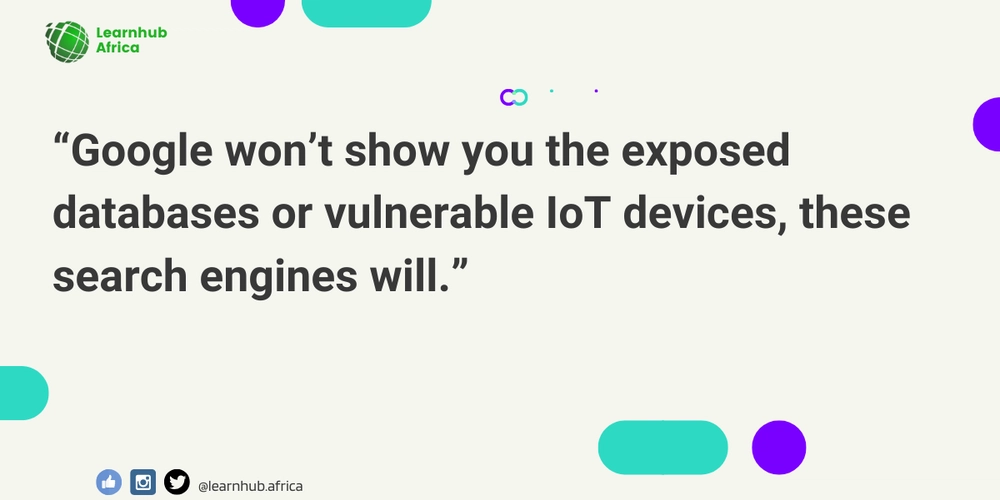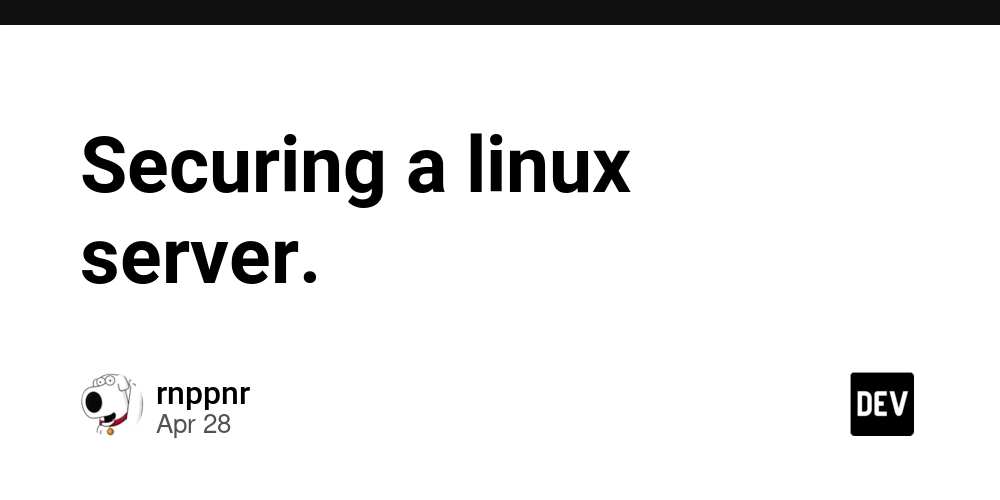Every Hacker Uses These Search Engines in 2025
If you are new to the tradecraft of hacking, welcome. This guide will introduce you to some of the most commonly used search engines by hackers. Knowledge is power, and the more equipped you are, the better prepared you are. This is why learning about search engines is one of the most powerful and underrated weapons in a hacker's toolkit. While the average person relies on Google, ethical hackers, penetration testers, and OSINT professionals leverage specialized hacker search engines to uncover hidden data, misconfigured servers, vulnerable IoT devices, leaked credentials, and much more. Whether you're a penetration tester, bug bounty hunter, or security enthusiast, understanding and using the right search engines can elevate your reconnaissance and open doors to vulnerabilities others miss. Here’s a deep dive into the top search engines every hacker uses in 2025, how they work, and how to use them legally and ethically for penetration testing and OSINT investigations. 1. Shodan – The World's Most Dangerous Search Engine Website: https://shodan.io Keyword Focus: hacker search engine, exposed IoT devices, internet-connected systems Shodan is the gold standard for hacking-related search engines. While Google indexes web pages, Shodan indexes the devices themselves—like routers, webcams, traffic lights, smart TVs, industrial control systems (ICS), and more. What Shodan Does: Scans the internet for open ports and services Displays device banners (like SSH, FTP, HTTP, SNMP info) Allows filtering by IP range, port, country, device type, and more Why Hackers Use Shodan: To identify misconfigured systems To locate devices with default credentials To hunt for exposed databases (Elasticsearch, MongoDB, etc.) To monitor enterprise attack surfaces 2. Censys – TLS and Host Intelligence Search Engine Website: https://search.censys.io Keyword Focus: TLS certificate search, subdomain discovery, bug bounty tools Censys scans the IPv4 internet and indexes public-facing infrastructure, SSL certificates, and hosts. Features: Great for discovering expired or self-signed SSL certificates Used to track down subdomains Filters by port, tag, ASN, IP, and more Why It’s Powerful: It helps security researchers find shadow IT assets A goldmine for bug bounty hunters searching for forgotten subdomains 3. Wigle – Wireless Network Mapping Engine Website: https://wigle.net Keyword Focus: Wi-Fi hacking tools, wireless reconnaissance, war-driving data Wigle (Wireless Geographic Logging Engine) collects and visualizes global Wi-Fi network data, including GPS coordinates, SSIDs, and BSSIDs. Why Use Wigle? Locate open and weakly encrypted Wi-Fi networks Analyze network density in a physical area Great for red teaming and war-driving exercises 4. Hunter.io – Email and Domain Intelligence Tool Website: https://hunter.io Keyword Focus: OSINT tools, email reconnaissance, social engineering Hunter.io is a favorite for open-source intelligence (OSINT) professionals. It reveals the email addresses associated with a domain and the most common formats used. Use Cases: Identify email patterns (like firstname.lastname@domain.com) Build social engineering attack vectors Support phishing simulations for red teaming Combine with LinkedIn or social scraping tools for full personnel mapping. 5. Vulners – Vulnerability Intelligence Database Website: https://vulners.com Keyword Focus: vulnerability search engine, CVE database, ethical hacking tools Vulners.com is a powerful search engine for software vulnerabilities and exploits. Key Features: Real-time CVE data Exploit-DB and Metasploit integration Search by vendor, product, CVE ID, or patch release This is ideal for penetration testers looking to identify known vulnerabilities and generate proof-of-concept attacks. 6. LeakIX – Exposed Database Search Engine Website: https://leakix.net Keyword Focus: open database search, data leak detection, cyber threat intelligence LeakIX detects and indexes open databases, FTP servers, SMB shares, and other accidentally exposed services across the internet. Commonly Found: Exposed MongoDB & Elasticsearch servers Cloud buckets without authentication Web interfaces with no password protection LeakIX is a growing favorite in the attack surface management and cyber threat intelligence community. 7. crt.sh – SSL Certificate Transparency Search Website: https://crt.sh Keyword Focus: subdomain enumeration, certificate transparency search crt.sh enables you to search Certificate Transparency (CT) logs for certificates issued to specific domains. Useful For: Discovering hidden or forgotten subdomains Mapping staging or development environments Spotting suspicious wildcard certificates This is a must-have tool in any bug bounty reconnaissance workflow. 8. Intelligence X – Deep and Dark Web Indexer Website: https://intelx.io Keyword Fo

If you are new to the tradecraft of hacking, welcome. This guide will introduce you to some of the most commonly used search engines by hackers.
Knowledge is power, and the more equipped you are, the better prepared you are. This is why learning about search engines is one of the most powerful and underrated weapons in a hacker's toolkit.
While the average person relies on Google, ethical hackers, penetration testers, and OSINT professionals leverage specialized hacker search engines to uncover hidden data, misconfigured servers, vulnerable IoT devices, leaked credentials, and much more.
Whether you're a penetration tester, bug bounty hunter, or security enthusiast, understanding and using the right search engines can elevate your reconnaissance and open doors to vulnerabilities others miss.
Here’s a deep dive into the top search engines every hacker uses in 2025, how they work, and how to use them legally and ethically for penetration testing and OSINT investigations.
1. Shodan – The World's Most Dangerous Search Engine
Website: https://shodan.io
Keyword Focus: hacker search engine, exposed IoT devices, internet-connected systems
Shodan is the gold standard for hacking-related search engines. While Google indexes web pages, Shodan indexes the devices themselves—like routers, webcams, traffic lights, smart TVs, industrial control systems (ICS), and more.
What Shodan Does:
- Scans the internet for open ports and services
- Displays device banners (like SSH, FTP, HTTP, SNMP info)
- Allows filtering by IP range, port, country, device type, and more
Why Hackers Use Shodan:
- To identify misconfigured systems
- To locate devices with default credentials
- To hunt for exposed databases (Elasticsearch, MongoDB, etc.)
- To monitor enterprise attack surfaces
2. Censys – TLS and Host Intelligence Search Engine
Website: https://search.censys.io
Keyword Focus: TLS certificate search, subdomain discovery, bug bounty tools
Censys scans the IPv4 internet and indexes public-facing infrastructure, SSL certificates, and hosts.
Features:
- Great for discovering expired or self-signed SSL certificates
- Used to track down subdomains
- Filters by port, tag, ASN, IP, and more
Why It’s Powerful:
- It helps security researchers find shadow IT assets
- A goldmine for bug bounty hunters searching for forgotten subdomains
3. Wigle – Wireless Network Mapping Engine
Website: https://wigle.net
Keyword Focus: Wi-Fi hacking tools, wireless reconnaissance, war-driving data
Wigle (Wireless Geographic Logging Engine) collects and visualizes global Wi-Fi network data, including GPS coordinates, SSIDs, and BSSIDs.
Why Use Wigle?
- Locate open and weakly encrypted Wi-Fi networks
- Analyze network density in a physical area
- Great for red teaming and war-driving exercises
4. Hunter.io – Email and Domain Intelligence Tool
Website: https://hunter.io
Keyword Focus: OSINT tools, email reconnaissance, social engineering
Hunter.io is a favorite for open-source intelligence (OSINT) professionals. It reveals the email addresses associated with a domain and the most common formats used.
Use Cases:
- Identify email patterns (like firstname.lastname@domain.com)
- Build social engineering attack vectors
- Support phishing simulations for red teaming
Combine with LinkedIn or social scraping tools for full personnel mapping.
5. Vulners – Vulnerability Intelligence Database
Website: https://vulners.com
Keyword Focus: vulnerability search engine, CVE database, ethical hacking tools
Vulners.com is a powerful search engine for software vulnerabilities and exploits.
Key Features:
- Real-time CVE data
- Exploit-DB and Metasploit integration
- Search by vendor, product, CVE ID, or patch release
This is ideal for penetration testers looking to identify known vulnerabilities and generate proof-of-concept attacks.
6. LeakIX – Exposed Database Search Engine
Website: https://leakix.net
Keyword Focus: open database search, data leak detection, cyber threat intelligence
LeakIX detects and indexes open databases, FTP servers, SMB shares, and other accidentally exposed services across the internet.
Commonly Found:
- Exposed MongoDB & Elasticsearch servers
- Cloud buckets without authentication
- Web interfaces with no password protection
LeakIX is a growing favorite in the attack surface management and cyber threat intelligence community.
7. crt.sh – SSL Certificate Transparency Search
Website: https://crt.sh
Keyword Focus: subdomain enumeration, certificate transparency search
crt.sh enables you to search Certificate Transparency (CT) logs for certificates issued to specific domains.
Useful For:
- Discovering hidden or forgotten subdomains
- Mapping staging or development environments
- Spotting suspicious wildcard certificates
This is a must-have tool in any bug bounty reconnaissance workflow.
8. Intelligence X – Deep and Dark Web Indexer
Website: https://intelx.io
Keyword Focus: dark web search engine, leaked credentials, OSINT search engine
Intelligence X crawls and indexes content from the dark web, data leaks, TOR services, and even historical WHOIS data.
Perfect For:
- Checking if target credentials were leaked
- Investigating ransomware or dark web chatter
- Tracing old email address usage
This tool rivals many paid threat intelligence platforms and is favored for deep OSINT investigations.
9. FullHunt – Continuous Attack Surface Discovery
Website: https://fullhunt.io
Keyword Focus: attack surface management, exposed assets, cloud security
FullHunt is a cloud-based platform used to identify all internet-facing assets tied to a domain or company.
Top Uses:
- Monitor changes to public assets (subdomains, IPs, endpoints)
- Identify shadow IT
- Great for asset discovery and external pentests
10. SearchCode – Code Intelligence Search Engine
Website: https://searchcode.com
Keyword Focus: source code search engine, API leak detection, insecure code patterns
SearchCode helps you search public code repositories for hardcoded secrets, functions, and open-source vulnerabilities.
Hackers Use It To:
- Find API keys, passwords, and credentials committed by mistake
- Learn how developers implement (or misimplement) certain functions
- Identify vulnerabilities in frequently reused code snippets
This is especially powerful for software supply chain attacks and code auditing.
Bonus Tools Every Ethical Hacker Should Know
Here are a few more tools and engines worth checking out:
- Greynoise.io – Classifies IP addresses by their scanning behavior
- BinaryEdge.io – Another internet-wide scanner like Shodan
- Recon-ng – Framework for OSINT automation
-
ZoomEye – China's version of Shodan
– Advanced search engine for global cyberspace assets
Conclusion
Reconnaissance is the first and most critical phase in penetration testing. These hacker search engines give you access to powerful insights hidden in plain sight across the internet.
Whether you’re mapping an enterprise’s digital footprint or digging into a CTF target, these tools help uncover the low-hanging vulnerabilities before anyone else does.
But with great power comes responsibility. Use these tools legally and ethically, and always obtain authorization before scanning or interacting with live systems.




































































































































































![[The AI Show Episode 145]: OpenAI Releases o3 and o4-mini, AI Is Causing “Quiet Layoffs,” Executive Order on Youth AI Education & GPT-4o’s Controversial Update](https://www.marketingaiinstitute.com/hubfs/ep%20145%20cover.png)






























































































































![[DEALS] Mail Backup X Individual Edition: Lifetime Subscription (72% off) & Other Deals Up To 98% Off – Offers End Soon!](https://www.javacodegeeks.com/wp-content/uploads/2012/12/jcg-logo.jpg)


















































































































.png?width=1920&height=1920&fit=bounds&quality=70&format=jpg&auto=webp#)
.png?width=1920&height=1920&fit=bounds&quality=70&format=jpg&auto=webp#)























































































































![Google Home app fixes bug that repeatedly asked to ‘Set up Nest Cam features’ for Nest Hub Max [U]](https://i0.wp.com/9to5google.com/wp-content/uploads/sites/4/2022/08/youtube-premium-music-nest-hub-max.jpg?resize=1200%2C628&quality=82&strip=all&ssl=1)



























































![Epic Games Wins Major Victory as Apple is Ordered to Comply With App Store Anti-Steering Injunction [Updated]](https://images.macrumors.com/t/Z4nU2dRocDnr4NPvf-sGNedmPGA=/2250x/article-new/2022/01/iOS-App-Store-General-Feature-JoeBlue.jpg)





![T-Mobile is phasing out plans with included taxes and fees starting tomorrow [UPDATED]](https://m-cdn.phonearena.com/images/article/169988-two/T-Mobile-is-phasing-out-plans-with-included-taxes-and-fees-starting-tomorrow-UPDATED.jpg?#)

















































